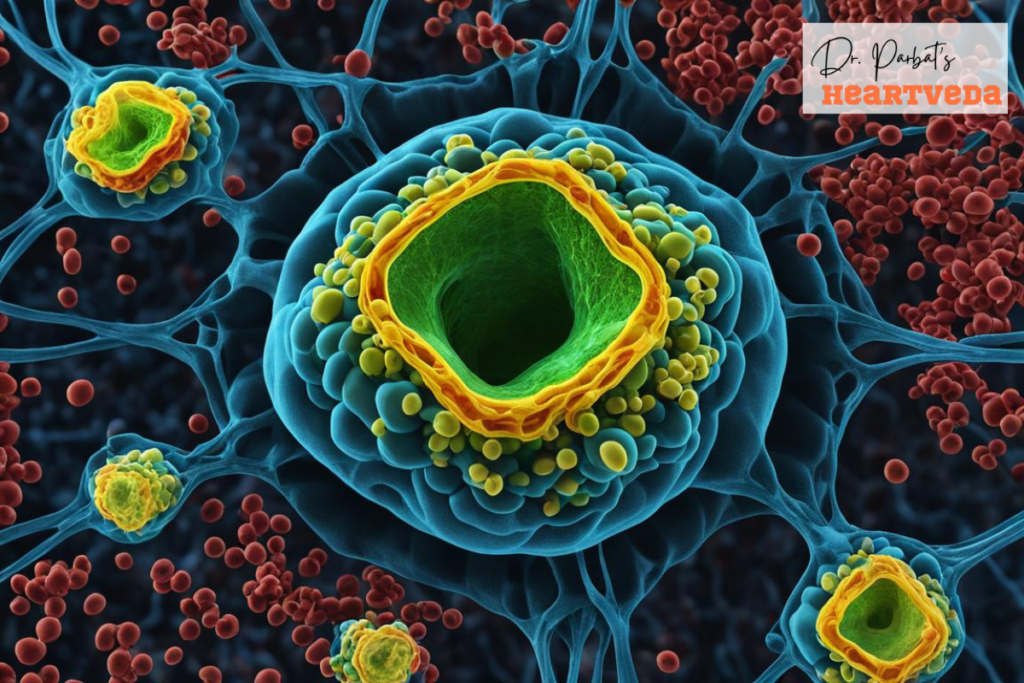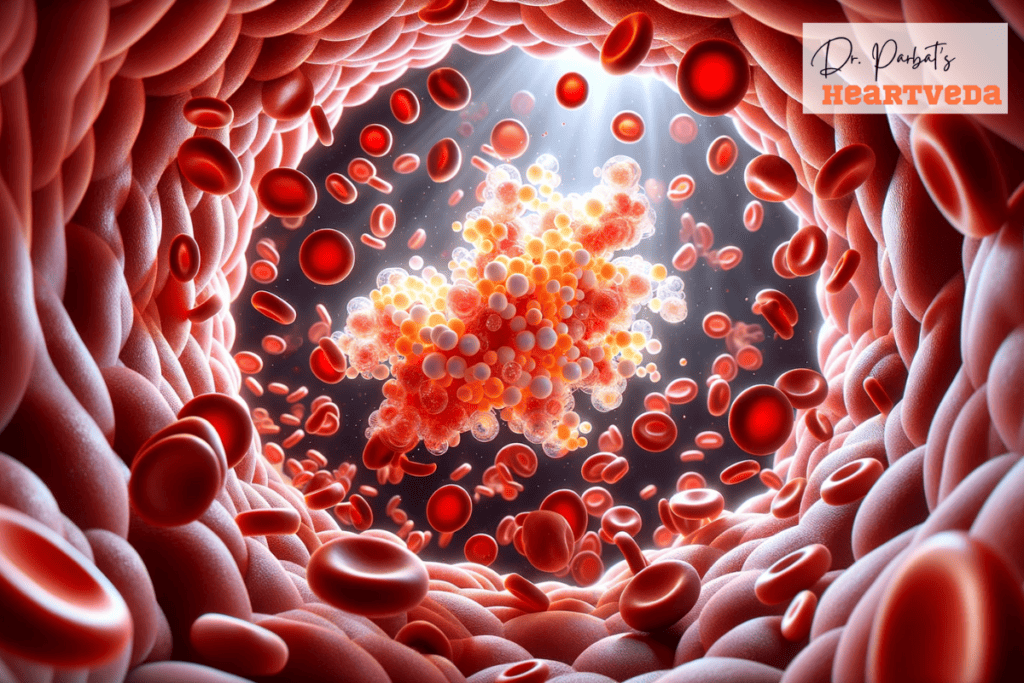
Welcome to a deeper dive into the cellular distribution of cholesterol, a topic that perhaps intrigues your scientific curiosity. If you’ve ever pondered about cholesterol positioning in the cell, this information can illuminate the essentiality of this lipid molecule beyond its infamous tag as a health adversary.
Cholesterol, a quintessential component of cell membranes, plays a pivotal role within your body, especially in brain and liver tissues where it abounds. It not only provides structural integrity to membranes but also preludes the formation of substances crucial to your wellbeing—steroid hormones, bile acids, and vitamin D3 among them.
The journey of cholesterol begins with its synthesis or intake and then meticulously navigated by lipoproteins, including the well-known LDL and HDL. The former, often tagged as ‘bad cholesterol’, in excess can be detrimental, leading to conditions such as ASCVD. On the other hand, the intricate interplay within the cells involves a transformation from precursors to indispensable end products within the adrenal glands.
Understanding the intracellular cholesterol localization isn’t just academic—it’s pivotal for insights into potential therapies and interventions for cholesterol-related conditions.
The Intricate Journey of Cholesterol: From Intake to Cellular Incorporation
As you continue to explore the complexities of your body’s functioning, you’ll find the cholesterol location in the cell quite fascinating. After you ingest foods rich in cholesterol, an elaborate process begins, taking this vital lipid from your intestines all the way to the cells that make up your tissues. It’s a journey where the cholesterol cellular localization plays a critical part. Picture the moment when cholesterol enters your bloodstream: this is where the real voyage to cellular incorporation starts.

Let’s break down the steps of this journey. Initially, free cholesterol makes its way to the plasma membrane, supported by a protein known as NPC1L1. The importance of this interaction cannot be overstated, as it underscores the precise mechanisms behind cholesterol’s subcellular location and its significance to cellular health.
It’s not just about getting to the cell’s doorstep though. Scientists from UCLA have recently shone a light on a crucial phase deep within this process. Proteins from the Aster family act as essential couriers, guiding cholesterol to its next destination: the endoplasmic reticulum. In this compartment, cholesterol undergoes an important transformation through the action of ACAT2, an enzyme that prepares it for its role in the bloodstream via esterification.
The discoveries emerging from the academic realm are immensely important. They offer fresh perspectives on the ways cholesterol is managed within our cells, eventually making strides towards potential new treatments for cholesterol-related conditions. Indeed, understanding the cholesterol subcellular location could be key to grasping how our cells utilise this molecule and maintain overall health.
Your cells’ demand for cholesterol is a precise affair, and each step in the journey is meticulously orchestrated within your body’s biochemical pathways. This careful progression from intake to cellular incorporation is crucial to sustaining a multitude of functions that keep you going every day. Acknowledging this, we can begin to appreciate the scale and precision of our internal processes in the ever-intriguing story of cholesterol cellular localization.
Cholesterol Distribution in Cellular Compartments
The cholesterol localization within cells is not random but follows a meticulously controlled distribution pattern, critical to the functions and integrity of cellular activities. You might be surprised to know that cholesterol’s presence is not just limited to being a stiffening agent of plasma membranes. It is also pivotal in the composition of lipid rafts, which are specialized microdomains involved in cellular signaling and trafficking processes.
As part of cell signaling, cholesterol’s impact on the Hedgehog signaling pathway is paramount. This pathway plays a substantial role during embryonic development and cell differentiation, and cholesterol directly influences its function. The proteins of the Hedgehog pathway undergo modification by cholesterol, suggesting a deep-seated relationship between cholesterol distribution in cellular compartments and vital cellular signaling.
| Cellular Compartment | Role of Cholesterol | Impact on Signaling Pathways |
|---|---|---|
| Plasma Membrane | Structural integrity, formation of lipid rafts | Receptor mediated signaling, raft-dependent trafficking |
| Lysosomes | Regulation of intracellular cholesterol levels | Endocytosis and signal initiation |
| Endoplasmic Reticulum | Cholesterol sensing and homeostasis | Cholesterol biosynthesis and regulation |
| Golgi Apparatus | Error proofing and transport of cholesterol | Protein modification and processing |
You can clearly see the importance of cholesterol localization within cells in maintaining cellular dynamics and health. By understanding these distributions, scientists are better equipped to explore therapeutic interventions in cholesterol-related disorders. Keep in mind, the right balance of cholesterol in these compartments ensures that your cells function optimally, exemplifying how this lipid molecule is much more than just a component of your diet.
Where is Cholesterol Found in the Cell?
When exploring the fascinating world of cellular biology, you may wonder, “Where is cholesterol found in the cell?” This question underscores the importance of cholesterol’s role in maintaining a healthy balance within your body’s microscopic building blocks. Intracellular cholesterol localization is not random; it’s a finely tuned process critical for various cellular functions.
Cholesterol is primarily located in cell membranes, including the plasma membrane and the membranes of organelles. It plays a pivotal role not only in the membrane’s structure but also in the function of membrane proteins. Let’s break down cholesterol’s presence in the cell:
- Plasma Membrane: Cholesterol contributes to the overall stability and fluidity of cell membranes, predominantly residing within the outer leaflet.
- Organelle Membranes: Organelles such as the mitochondria and endoplasmic reticulum also house cholesterol, which is crucial for their normal operation.
- Lipid Rafts: Within the plasma membrane, lipid rafts—microdomains rich in cholesterol—serve as platforms for signaling molecules.
Cholesterol’s presence is not limited to passive structural roles; it actively modulates the function of membrane-bound proteins and receptors, thus influencing signal transduction and cellular communication. The balance of cholesterol within cellular components underscores the seamless orchestration of life at the cellular level.
| Cell Component | Role of Cholesterol |
|---|---|
| Plasma Membrane | Imparts fluidity and structural integrity, modulates protein function |
| Endoplasmic Reticulum | Involved in the synthesis and metabolism of lipids |
| Mitochondria | Affects the synthesis of steroid hormones |
| Lipid Rafts | Assists in the assembly of signaling complexes and facilitates communication |
As such, cholesterol’s purpose within the cellular landscape extends far beyond its notorious reputation. While exploring the terrain of intracellular cholesterol localization, it’s essential to appreciate its multifaceted contribution to sustaining life at the microscopic level. Learning about the sophisticated locations and functions of cholesterol can empower you to make informed decisions about your health and well-being.
Cholesterol Localization Within Cells: A Focus on the Hedgehog Signaling Pathway
Cholesterol’s presence in cellular structures is crucial, but its role is especially pivotal in the Hedgehog signaling pathway, a system fundamental for your body’s development and cell communication. Within this pathway, cholesterol’s subcellular location is not merely a structural element—it’s the linchpin that ensures the pathway operates accurately.
The activation of Smoothened (SMO), a key receptor in the Hedgehog pathway, relies directly upon cholesterol. This activation is vital for signal progression, and without cholesterol’s interaction, the entire pathway could be thrown into disarray, potentially leading to various diseases and developmental issues.
Let’s delve deeper into cholesterol’s cellular localization and understand why its proper distribution is synonymous with healthy cell function. Here’s a glimpse at how cholesterol supports the intricacies of the Hedgehog pathway:
| Cholesterol’s Role | Function in Hedgehog Pathway | Impact of Disruption |
|---|---|---|
| Activator of SMO | Promotes signal transduction necessary for development | Developmental anomalies, disruption in cell communication |
| Modulator of pathway components | Regulates the localization and function of pathway proteins | Abnormal signaling, potential for disease pathology |
| Structural component | Contributes to the correct formation of the primary cilium | Alterations in cell shape and motility |
An understanding of cholesterol subcellular location is essential, especially when you consider its profound impact on such a critical signaling pathway. Your awareness could have implications for health, with a focus on preventing and treating conditions related to improper Hedgehog pathway functioning.
Conclusion
As we delve into the labyrinth of the cell, the question of where is cholesterol found in the cell finds its answer in the plethora of essential roles it plays. Your understanding now encompasses cholesterol’s key contribution to the plasma membrane’s robustness, ensuring the integrity and functionality of our cells. Moreover, cholesterol’s synergistic involvement in the endoplasmic reticulum during lipid processing is crucial for maintaining cellular health.
The ins and outs of cholesterol’s participation in the Hedgehog signaling pathway add another layer to our comprehension of how its cellular localization impacts developmental sequences, potentially leading to various health disorders when mismanaged. This insight into cholesterol distribution in cellular compartments shines a light on how critical a balanced cholesterol level is for cellular operations and the broader implications it holds on organismal well-being.
Grasping the complexity and nuances of cholesterol’s presence within our cells not only bolsters the foundation for targeting cholesterol-related complications but also opens up new pathways for future research initiatives. It prompts us toward a more profound investigation into the molecular choreography that orchestrates cholesterol’s pivotal locations and functionalities in the cellular environment. Therein lies the key to unlocking groundbreaking therapeutic strategies and enriching our knowledge on the journey of cholesterol in the intricate dance of life.
Key Takeaways
- The vital presence of cholesterol in cell membranes throughout various tissues, especially in the brain and liver.
- Recognition of cholesterol as a forerunner for vital molecules in the body, such as hormones and vitamins.
- The role of LDL and HDL in transporting cholesterol and how their levels impact the risk of cardiovascular diseases.
- Insight into the adrenal gland’s reliance on cholesterol, particularly HDL, for hormone production.
- Comprehension of cholesterol’s positioning in the cell is key to developing targeted treatments for cholesterol-induced health issues.
